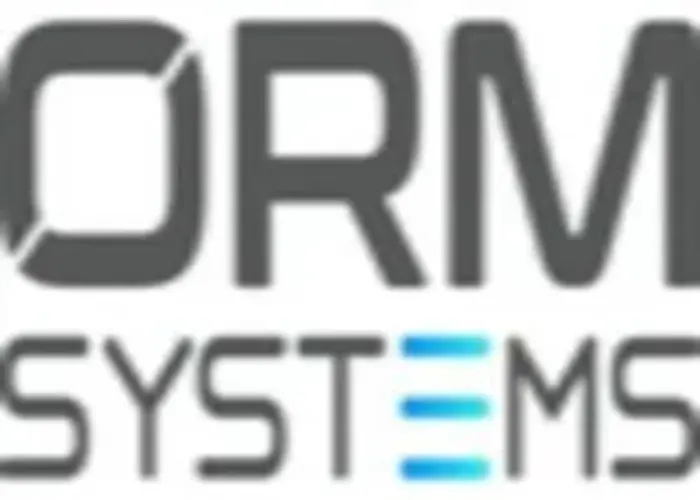When you think of modern car technology, window switches might not be the first thing that comes to mind. Yet, these small but mighty components are crucial to our driving experience—especially in vehicles like the 2015 Hyundai Accent Window Switch. While they may seem simple, window switch technology has evolved significantly. The future promises even more innovation and convenience for drivers. Whether you’re considering an upgrade or simply curious about what’s next for window switch design, this blog will take you on a journey through the past, present, and future of window switches in your 2015 Hyundai Accent. Buckle up as we explore key advancements and what they mean for your daily drive!
Understanding Window Switch Technology
Window switch technology might seem straightforward, but it’s built on a foundation of intricate mechanics and electrical engineering. At its core, the window switch controls the movement of your vehicle’s windows. You can effortlessly raise or lower each window with just a push or pull.
The traditional design features a simple toggle mechanism connecting to an electric door motor. When activated, this motor pulls up or pushes down the glass pane. Over time, these switches have become more sophisticated to enhance user experience.
In modern vehicles like the 2015 Hyundai Accent, window switches often include additional features such as one-touch operation and safety lock mechanisms. One-touch allows users to open or close windows with a single tap, which is incredibly convenient during quick stops.
Some models even integrate auto-reverse technology to prevent accidents when closing windows—a thoughtful addition that safeguards passengers and pets alike.
The rise of electronic interfaces has also changed how we interact with our car’s controls. Touch-sensitive panels are beginning to replace mechanical buttons in newer designs, offering sleek aesthetics and functionality.
Evolution of Window Switches
Window switches have come a long way since their inception. Initially, they were simple mechanical levers or cranks requiring physical effort. These early designs were functional but lacked the convenience and sophistication we see today.
As technology progressed, manufacturers began introducing electric window switches in the 1980s. This innovation revolutionized how drivers interacted with their windows. Raising or lowering windows became effortless and more user-friendly with just a push of a button.
Advancements in the late ’90s and early 2000s led to features like one-touch operation. This allowed users to fully open or close windows by pressing the switch briefly, showcasing an evolution toward automation and ease of use.
The introduction of touch-sensitive controls marked another milestone in window switch design. These systems eliminated traditional buttons and responded to light taps or gestures, enhancing driver convenience and reducing vehicle clutter.
Modern cars have advanced technologies, such as express up/down functions and individual window control for each passenger door. The ongoing development signals an exciting future for vehicle window switch technology like the 2015 Hyundai Accent.
Key Innovations in Window Switch Design
Window switch design has seen remarkable advancements recently, especially for models like the 2015 Hyundai Accent. One of the key innovations is the integration of touch-sensitive technology. This lets drivers control windows with a mere swipe instead of traditional buttons, enhancing user experience and convenience.
Another significant innovation is the incorporation of one-touch auto-up and down features. With this technology, users can open or close their windows quickly without continuously holding down the switch. This saves time and adds an element of safety by allowing drivers to keep their attention on the road.
The ergonomic design has also evolved significantly. Switches are now more intuitively placed within arm’s reach, which minimizes distractions during driving. The tactile feedback provided by modern switches ensures that users know they’ve engaged in a function without needing to take their eyes off the road.
Additionally, many manufacturers have used materials that resist wear and tear better than previous options. High-quality plastics and finishes ensure durability while maintaining an attractive aesthetic appeal.
Some advanced designs feature customizable settings through smart technology integration. Users can adapt window controls according to personal preferences or even set them up for specific scenarios like parking or ventilation needs.
Benefits of Advanced Window Switches
Advanced window switches are not just about aesthetics; they offer significant convenience. One-touch operation allows drivers to open or close windows with a single press, making it easier quickly. This feature simplifies the process, whether you’re getting in or out of your car.
Child Lock Features
These advanced systems often come equipped with child lock features, allowing parents to quickly turn off rear window controls. This feature prevents little hands from playing around while driving, making it an essential addition for families who prioritize safety on the road.
Improved Durability
Newer technologies improve the durability of window switches. Advanced materials in these switches resist wear and tear better than older models, ensuring longevity and reliability over time. Drivers can expect fewer replacements as technology progresses.
Common Issues and Solutions: 2015 Hyundai Accent Power Window Switch
The 2015 Hyundai Accent Power Window Switch can sometimes exhibit issues that may frustrate drivers. One common problem is the failure of a switch to respond. It could be due to electrical faults or wear over time, making it essential to troubleshoot promptly.
Another frequent issue involves windows becoming stuck in either an open or closed position. This can happen from dirt and debris accumulation in the tracks or a faulty regulator. Regular cleaning and inspection of these components often resolve this problem.
If your window switches are slow to react, it might indicate an underlying electrical issue or low battery voltage. Checking your vehicle’s battery health should be one of the first steps in diagnosing this delay.
Sometimes, window switches become unresponsive after exposure to moisture. If water gets into the switch assembly, it might cause corrosion and malfunction. Keeping your car dry inside will help prevent such situations from arising.
If you find any buttons physically damaged, replacing them is usually straightforward, with replacement parts readily available online or at local auto shops. Addressing these concerns early on will help maintain functionality and enhance your driving experience.
Upgrading to the Latest Technology
Upgrading to the latest window switch technology can significantly enhance your 2015 Hyundai Accent experience. Modern switches offer improved responsiveness and functionality, making daily driving more enjoyable. It might be time for an upgrade if you’re still using outdated components.
Today’s window switches often have features like one-touch operation and anti-pinch sensors. These advancements provide the convenience and safety that earlier models lacked. You can open or close windows fully without holding down the switch with a tap.
Many aftermarket options also allow for customization of aesthetics and functionality. Whether you want illuminated buttons or unique designs, plenty of choices are available to fit your style while enhancing usability.
Installing upgraded window switches typically involves straightforward processes; however, if you’re unsure about DIY methods, consult professionals. They can ensure compatibility with your vehicle’s electrical system.
Investing in modern technology improves performance and can increase the resale value of your 2015 Hyundai Accent. Buyers appreciate vehicles with advanced features that reflect innovation and care for maintenance over time.
Maintenance and Troubleshooting
Maintaining the window switch in your 2015 Hyundai Accent is essential for smooth operation. Regular checks can prevent minor issues from escalating into major problems. Start by inspecting the switch for any visible dirt or debris that might hinder its function.
If a window is unresponsive, it’s wise to examine the fuse box first. A blown fuse could be the culprit behind non-functioning windows; replacing it is usually straightforward. Keep spare fuses on hand to save time during troubleshooting.
Sometimes, electronic glitches may occur due to moisture or exposure to extreme temperatures. If this happens, try gently cleaning around the switch with a soft cloth and some electrical contact cleaner. This simple step can restore functionality without costly repairs.
If issues persist after cleaning and checking fuses, consider testing other window system components, such as motors and wiring harnesses. A multimeter can help diagnose electrical connections effectively.
When all else fails, consulting your owner’s manual or seeking professional assistance may be necessary. Experts have specialized tools and knowledge, often leading to quicker resolutions than DIY attempts alone.
Conclusion
The future of window switch technology in the 2015 Hyundai Accent Window Switch is promising. With constant advancements, drivers can expect a seamless integration of features that enhance convenience and safety. The focus on user experience continues to shape innovations in this area. As manufacturers experiment with new materials and designs, we can anticipate switches becoming more responsive and durable. This evolution improves functionality and aligns with modern aesthetic preferences within vehicle interiors. Safety remains a top priority for automakers. Enhanced window switch technology aims to prevent accidents by incorporating features like pinch protection or automatic reversal systems. Such functions offer peace of mind for both drivers and passengers alike.
FAQs
What is a window switch?
A window switch controls the operation of your vehicle’s power windows. It allows drivers and passengers to raise or lower their windows with ease.
How do I know if my window switch is faulty?
Common symptoms include unresponsive switches, intermittent functionality, or strange noises when operating the windows. If you notice these issues, it might be time for inspection or replacement.
Can I upgrade my 2015 Hyundai Accent Window Switch?
Yes! 2015 Hyundai Accent Window Switch Many aftermarket options offer enhanced features like one-touch operation and improved durability. Upgrading can provide better performance and user experience.
| Related Business Listings |
| Contact Directory |
| Local Business Profiles |




